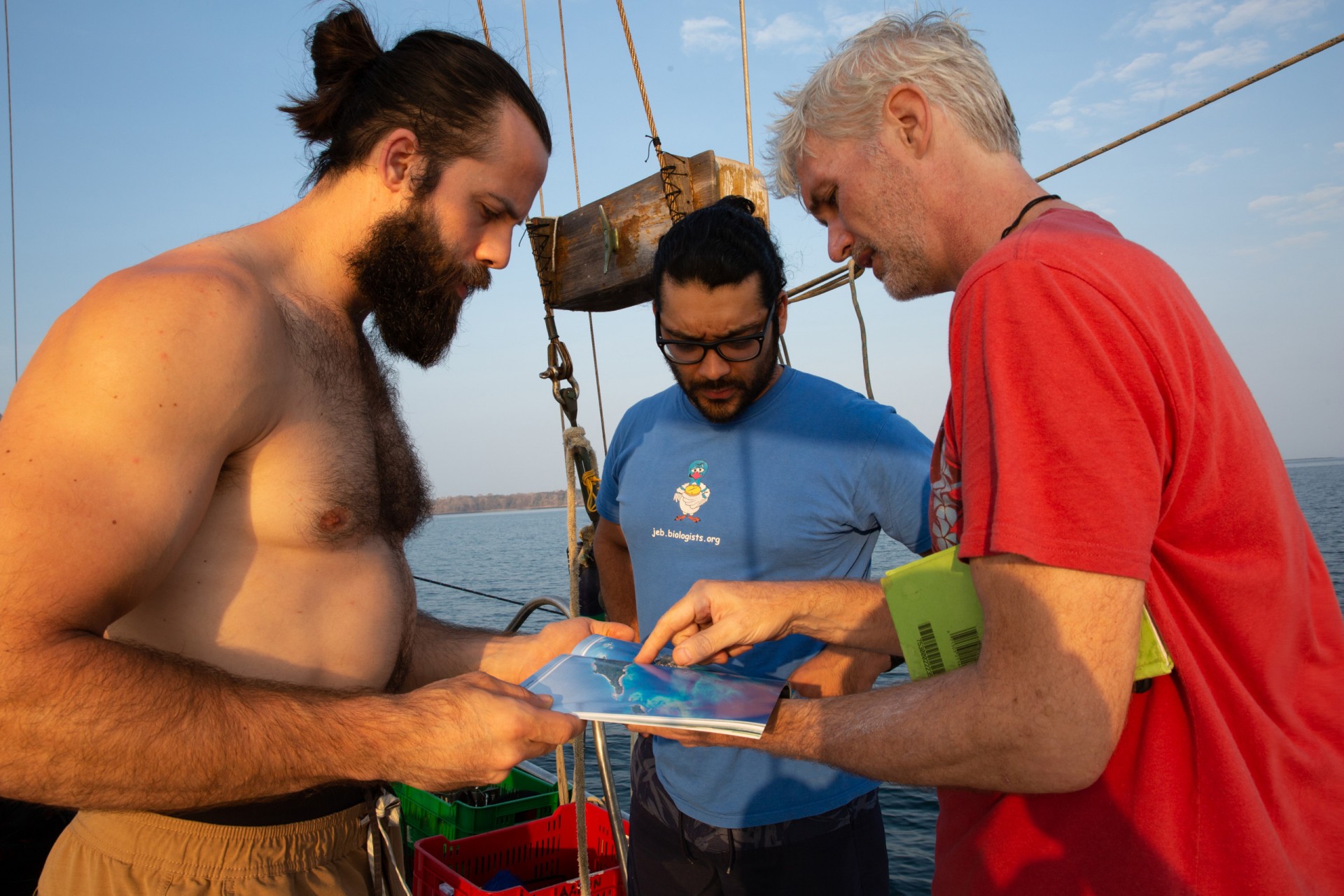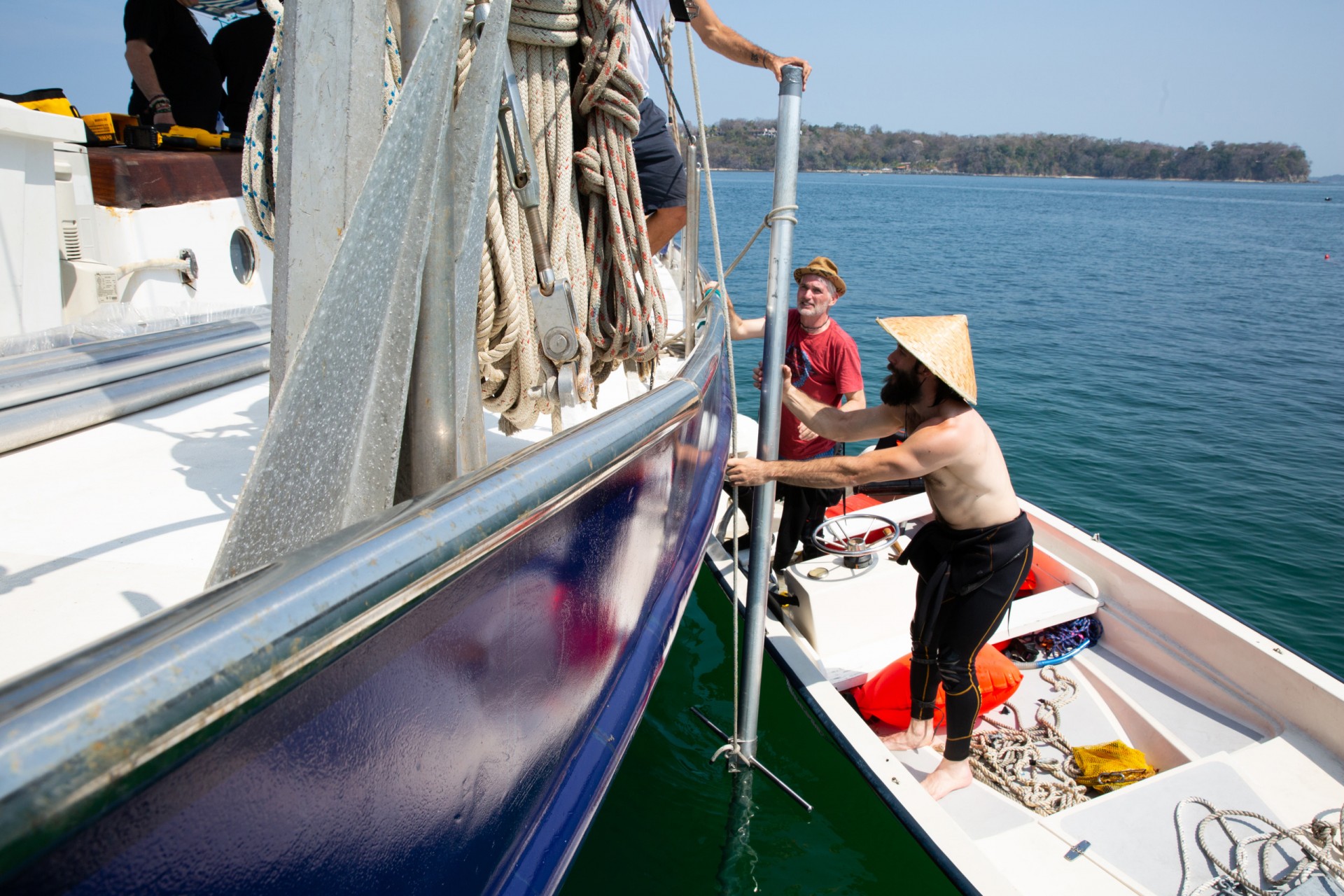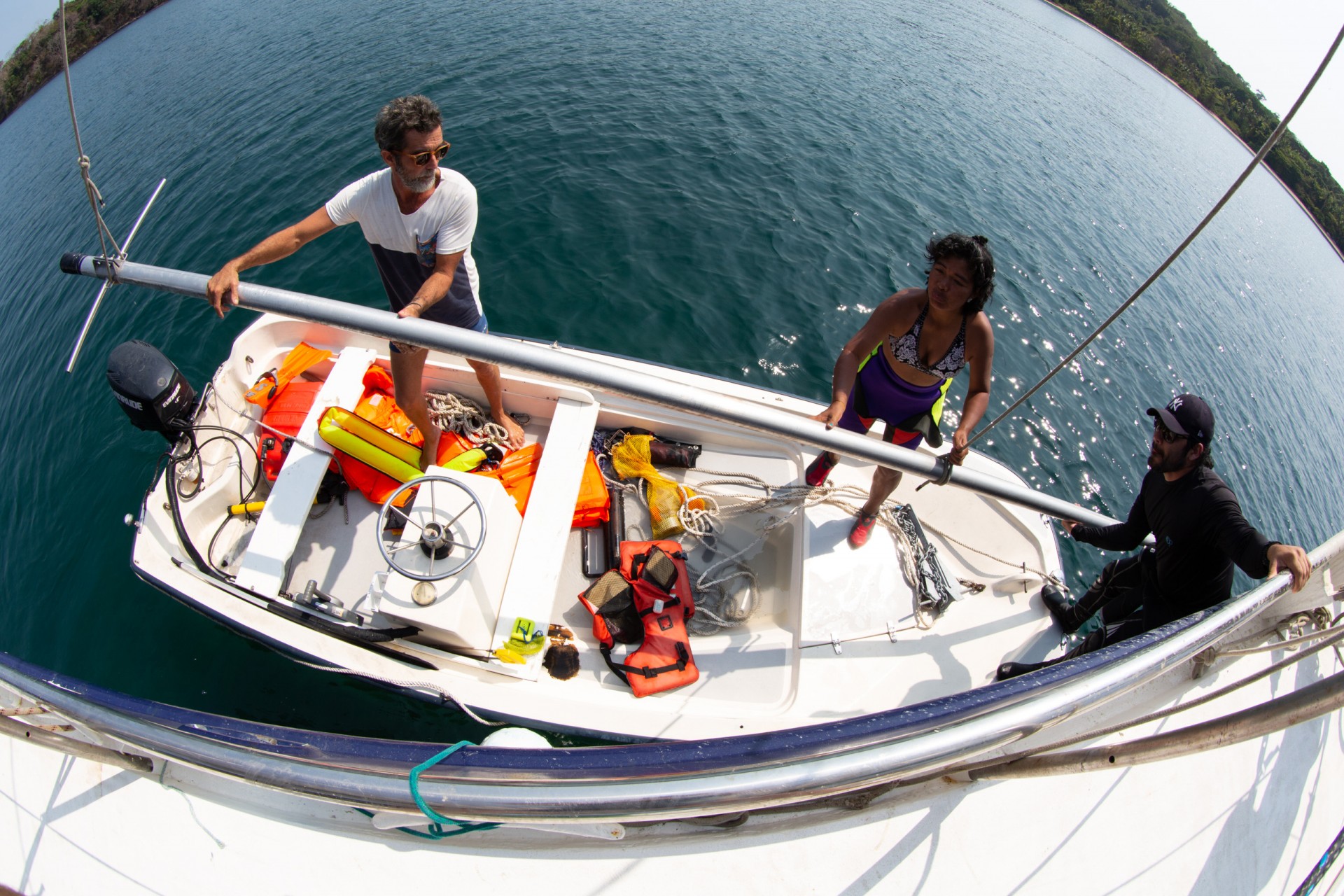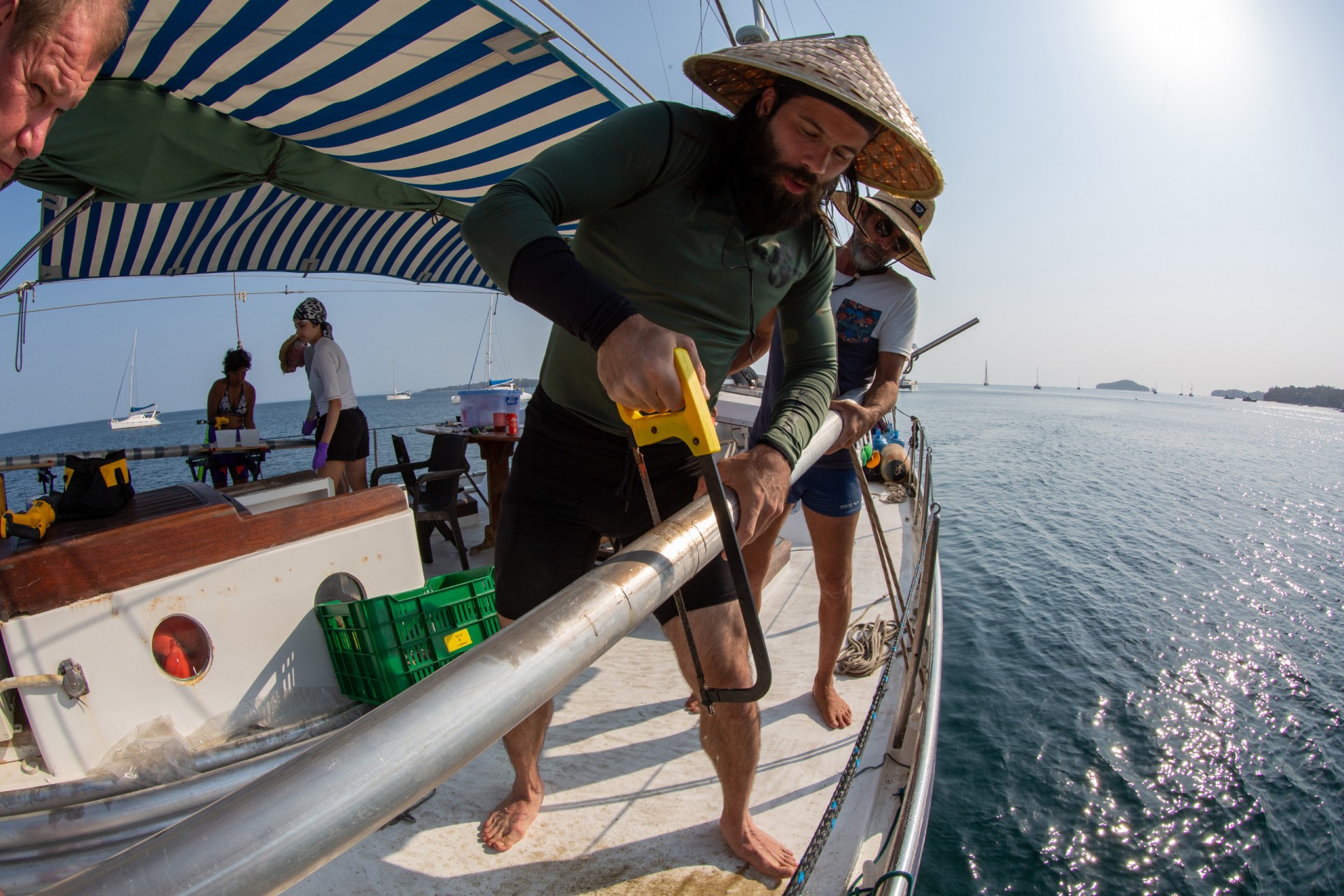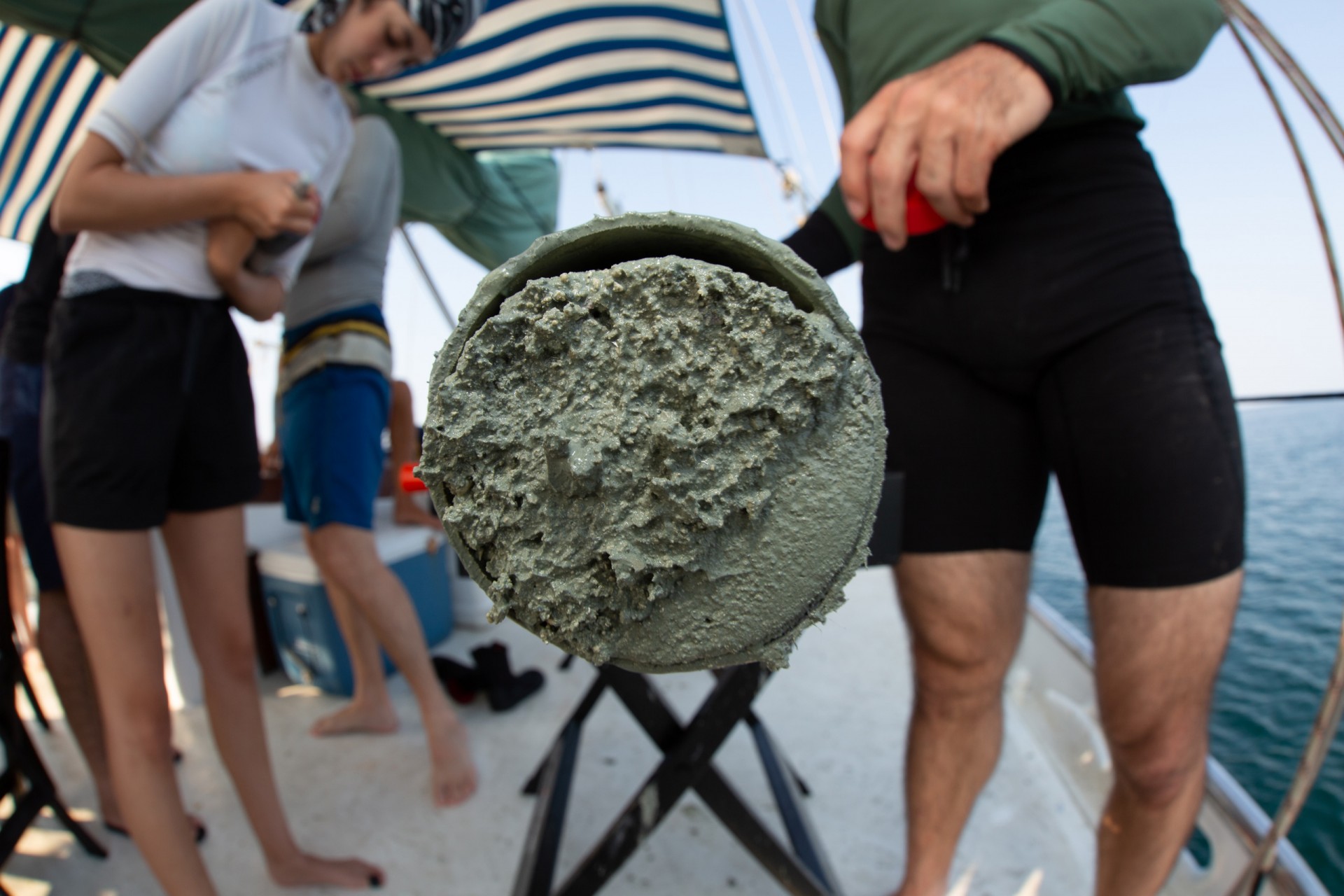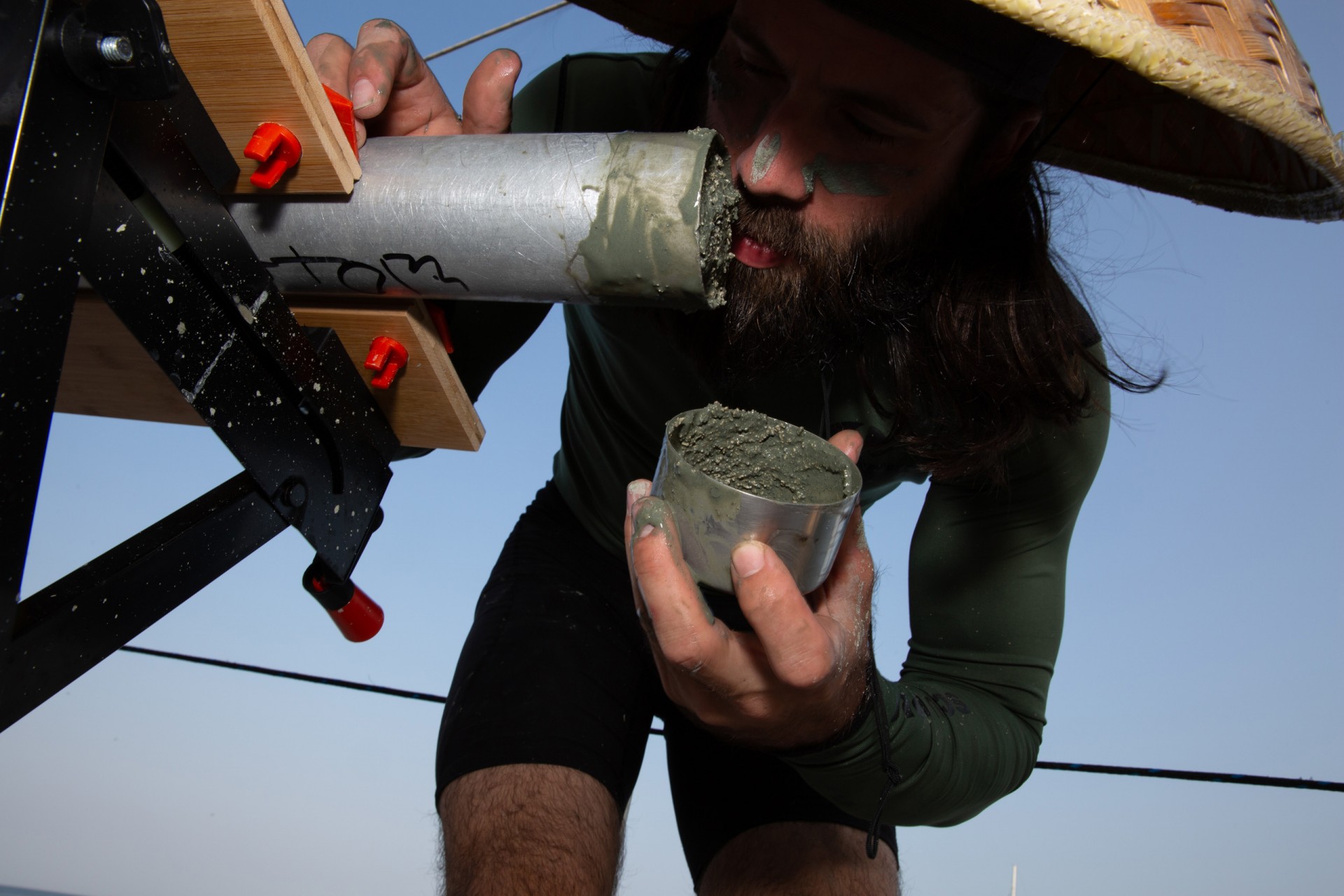Ancient
corals
A time machine that
explores the ocean’s past
Las Perlas Archipelago
By diving into the past lives of coral reefs, a historical ecologist may protect our present-day reefs from human impacts
A first look at Jon Cybulski may not reveal that he isn’t a creature of the tropics, but native to New England, USA. Wearing shorts and a tank top, he runs out of the Smithsonian Tropical Research Institute’s (STRI) Naos Marine laboratories to meet with a taxi driver who sells him a traditional Panamanian fonda lunch.
Only briefly in Panama for a short-term fellowship in Aaron O’Dea’s lab at STRI, Jon typically can be found diving on the other side of the world, among Hong Kong’s highly diverse coral reef assemblages. As a historical ecologist and a doctoral student at the University of Hong Kong, he is trying to understand what these coral reefs looked like in the past, how they changed through time and why. And as a National Geographic Young Explorer, he is figuring out how the extraction of coral colonies, historically used to produce slaked lime for buildings and export, impacted coral reef ecosystems on that side of the world.
In Panama for most of the dry season, Jon took part in diving expeditions that allowed him to explore the waters around Las Perlas Archipelago and Coiba island, both in the Pacific Ocean. More specifically, he peered into the world lying underneath the ocean floor, one that goes back thousands of years and has many stories to tell.
Like our soils, the ocean floor is formed by layers of sediment that accumulated over time. This includes calcium carbonate particles of many different sizes and types, such as coral fragments, microgastropod shells, sea urchin spines, calcifying algae and fish otoliths. They can be dated to shed light onto how ocean ecosystems developed through the ages, including the relative diversity and abundance of species at different times in the past. In a way, they serve as a time machine to view what ancient coral reefs were like thousands of years in the past.
“As historical ecologists, our task is to tell the story of an ecosystem through time and how species were interacting within it,” says Jon.
To retrieve layers of sediment at each site he visited, Jon got into his scuba diving gear and descended towards the ocean floor carrying over 6-meter long aluminum pipes. With help from the field team, he banged the pipes into the ground, capped them and pulled them out. Back on the boat, the pipes were cut into sections. Those smaller sections were then split open and sampled for calcium carbonate fragments to be analyzed and sent to a lab that determines its age.
While he waits for the results of the dating analysis, which could take a few months, Jon came across some unexpected data, which is inconsistent with previous research conducted in the area. His expectation was to encounter a halt in reef growth, due to past climate change, but instead he found transitions in the types of coral dominating the reefs, including rhodolith beds, a type of hard algae that resembles coral.
“Shifts from coral to algal growth are of interest to reef ecologists the world over”, explains his advisor, Aaron O’Dea. “But potentially more interesting is how coral reefs might recover. In these cores we see corals recover after rhodolith domination three times over the last few millennia. It might help us see what it takes for corals to recover on top of rubble”.
As they ponder these discoveries, both Jon and Aaron continue to be primarily concerned about the present-day changes in ocean conditions driven by human impacts on the environment, and how they may affect marine species. It wouldn’t be the first time the ocean faced altered conditions, but, in the past, change was likely slower than the swift deteriorations driven by humans. With their historical data, they hope to guide decision makers in developing guidelines for promoting and focusing coral conservation and restoration in vulnerable areas.
“These coral reefs are homes to so many marine species. We must use the historical data to compare past conditions to the present ones, and then look towards the future, asking ourselves: how can we give them their best opportunity at surviving future changes?” concludes Jon.

